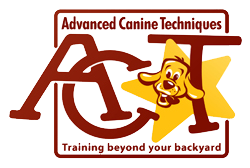10 Dog Owner habits that can ruin training and trust with your dog
- Buying cheap equipment – do research on using the training aid safely (consult a professional if needed). Whether it is a gentle leader, e-collar, prong collar, harness, etc. When the correction is inconsistent or the fit is incorrect, your dog will get the wrong message and you will create distrust, fear and frustration in your dog.
- Buying cheap food and treats – just like with people, fast food and junk food are cheaper but they make you feel sluggish, tired and don’t allow you to utilize your potential. The same applies to dogs. Low quality foods create a preservative ‘high.” Dog’s can’t focus, use the bathroom all the time and struggle to retain information. This can affect their health and their training.
3. Having collars or harnesses on too loose – when the equipment is too tight or too loose it can be dangerous. Too loose and it falls off and the dog runs away, causes an injury to themselves, another animal or person, or too loose and it can cause sores and injuries to the dog.
- Using equipment ineffectively – I think prong collars are great training aids for some dogs (not all) but I believe you need to use them correctly. You should be able to use light leash pressure and allow the dog to figure it out on their own as opposed to giving a harsh correction. The same can apply to head halters, e-collars and harnesses too. You need to be gentle and allow time the dogs some acclimation. There is a saying “It’s the fool, not the tool” that is common in dog training. I believe George Cockrell created that phrase.
- Continuing to do the same thing every day and expecting different results – expecting the dog to “figure it out” as they get older even if we haven’t taught them what to do. And then getting mad and frustrated when they keep making the same mistakes.
-
- Utilize training aids to help you. I often tell clients that if your dog does not have a reliable recall in the backyard, put them on a long lead or tie out when they are outside so you can reinforce come when you call them.
- Use a leash in the house to prevent jumping up or getting on furniture and use the crate to help with counter surfing, getting into the trash or chewing furniture and human belongings.
- Purchasing or adopting a dog that does not fit your lifestyle. If you are active and love to run, hike and be outdoors, a high energy breed is perfect for you. If you are a couch potato, a slow energy breed is a better option for you. If you have kids and adopt a herding breed, don’t get mad when the dog herds your kids.
-
- Along the same lines, making sure you have time for the dog when the kids go back to school and/or start playing sports. Or have a plan in place to provide the dog with the required exercise and mental stimulation.
- Refusing to crate (or even use an x-pen) – you cannot watch your puppy 24/7 so crating or confining is the best way to keep them safe and keep your materials from being chewed, soiled or destroyed. It also assists with potty training and speeds up that process.
8. Keeping a leash on your puppy or dog in the house to keep them from making mistakes (and going outside with them on a leash even in inclement weather). Sometimes the best management tool is supervision but that means you need to keep an eagle eye on your pet at all times or crate them, so they can’t get into mischief.
- Timing (using a treat pouch for rewarding the dog or having a corrective tool available) – there is a magic window to reward or punish a dog for their action (1-3 seconds). The best way to do that is wear a treat pouch, apron, fanny pack, etc so you have the items readily available when needed.
- Being unwilling to be a leader for your dog (just wanting to be their friend). – Dogs’ need a leader, not a best friend. The latter can come if you provide the foundation first. I would rather have a dog respect me than like me. Respect has to be earned and once a dog trusts me and realizes that I am fair, firm and will be their advocate, then we can be friends BUT you have to do the hard work first.
I am sure we are all guilty of some of these bad habits every now and then. BUT now that we are aware of it, we can work to change our habits to help our best friend be the best dog they can be!

